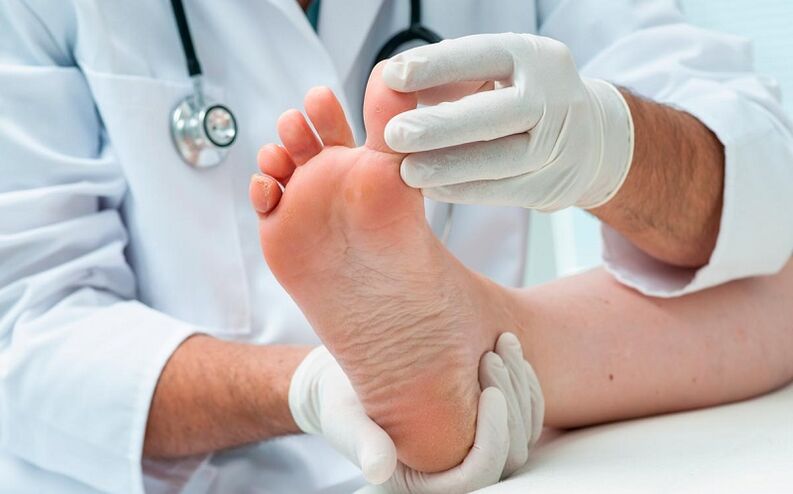A lot of people seeing ads for anti-fungal drugs on TV switch to the channel and think, “It doesn’t affect me, I’ll never have a fungus! ” It would be nice if that were the case, but catching this infection is easier than catching. you would think and getting rid of it is extremely difficult.

Sometimes they don’t see a dermatologist in time for a fungal infection of the legs because they don’t think he is. “It’s not a mushroom, it was a mushroom for my friend, and it didn’t look like that, ” some argue. In fact, the symptoms of this infection may be different, and if you experience any discomfort in the foot area, see a doctor immediately. He will take tests and only then determine the diagnosis.
Or maybe you don't pay attention to itching, peeling of the skin, changes in the condition of the toenails? After all, it is not a disease of the internal organs and does not threaten any atrocity. Too bad I go to the doctor, he suddenly thinks he’s kind of stupid. And this opinion is also widespread among the population. And the attitude towards your own health can be called irresponsibility. After all, it is easier to cure the fungus by early capture, otherwise the disease will either fade or worsen again. And most importantly, your family members can also get infected with the fungus. Therefore, there can be no two opinions on this issue. Treat me, right!
How and where can they become infected with the fungus?
Mushrooms can wait anywhere we walk barefoot: on the beach, in the pool, in the bathroom, and even in an ordinary apartment. Usually, this infection can affect any area of the skin, but the feet are most often caused by several factors. These include the constant wearing of shoes made of low-quality materials, increased sweating of the feet, more frequent contact with surfaces on which fungi can live. The mycelium spreads very quickly under the skin, causing itching and other discomfort.
Let's take a closer look at the routes of infection.
- The fungus can spread per person by wearing the same shoes (such as slippers), socks, using a towel, and lying down with sexual partners.
- Walking barefoot in public pools, baths, saunas, beaches. In the case of mushrooms, a humid environment is an ideal condition for reproduction. Slate or shoe covers can prevent infection.
- In the manicure and pedicure room, if the instruments are not sterilized well enough, or simply when using the appliances of others at home. It’s best to visit a well-established manicure specialist who hasn’t had such an exaggeration before and use personal tools at home and treat them with alcohol every time.
Strengthening the immune system will help reduce risk factors, but no one has cleared the rules of personal hygiene. It is important to trust doctors to treat the fungus and not use folk recipes.
How to recognize a foot fungus?
Many infections are suitable for the fungus, and their manifestations may vary. But many of them have symptoms.
First itching. It is weak at first, but grows stronger over time, becoming unbearable, especially at night. Consecutive foot baths, sage and other herbs provide temporary relief, but the fungus does not go away and continues to cause itching and burning.
Nails get an unprecedented look. They turn yellow and dark, may be heterogeneous in color, break, peel, and have a bumpy surface. The changes in the nail plate start at the edge and gradually spread to the cuticle itself.
Over time, your feet start to sweat, even in sandals and slippers, and an unbearable odor develops.
The skin of your feet may not discolor at all, or may turn slightly red and then peel off.
If you experience at least one of these symptoms, you should see a doctor. It may preclude a diagnosis of the fungus, and itching may be a common allergy. But you can only find out after passing the tests. Neglecting the disease can lead to complete detachment of the nails, permanent scratching of the skin can damage it, and it gets inside the infection, causing ulcers.
How do we treat foot fungus?
Treat as directed by your doctor. Tests show what type of fungus is infected and treatment depends on it. Sometimes a doctor may recommend the use of folk remedies in combination with pharmaceuticals and medical procedures. Let’s take a closer look at these methods.
- Laser treatment.During laser treatment, the beam penetrates deep into the skin, destroying the fungal mycelium. The number of sessions ranges from three to ten. The wave radiation is generated by a special device. A fungus with this effect gradually dies. Sometimes wave treatment with small breaks can take up to three months.
- Medical procedures.These include wave treatment, skin cleansing with a medical manicure or pedicure. Medical manicures or pedicures do not provide deep treatment for the fungus, they are applied at the end of the disease to bring the fingernails of the hand or foot to a more or less normal appearance.
- Medications.Only a doctor should prescribe this or that medicine. It can be tablets, ointments, creams, lotions, varnishes.
- Folk remedies.These are trays, infusions, herbal oils and other plant parts. It is only used in combination with medicines. Baths can relieve itching, improve the appearance of the skin, but do not get rid of the fungus completely. The most popular are baths with oak bark or celandine, propolis tincture on alcohol, tea tree oil.
It makes sense to repeat once again: treating a fungus is not an easy task and should not be started without a doctor, otherwise you may be pushing the disease deeper but will remind yourself regularly.






























